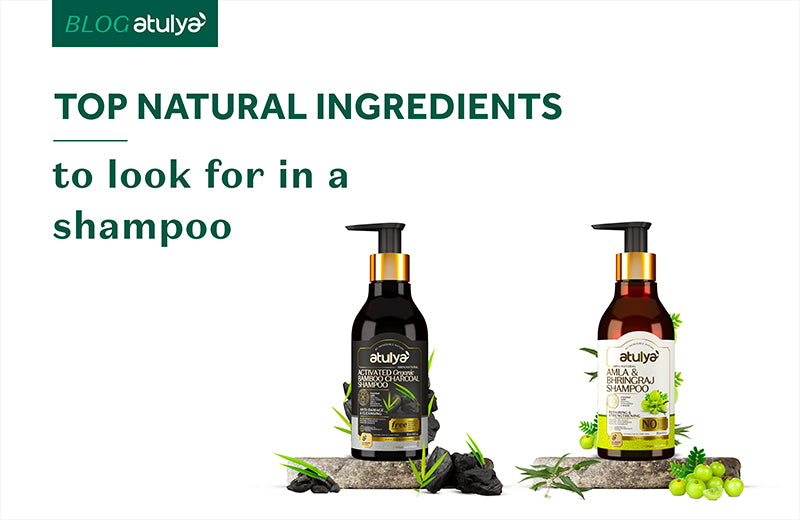How to Manage Oily Skin in Different Seasons and Ages (Teens to Adults)
Oily skin is one of the most common skin concerns people face, from shiny foreheads to clogged pores and stubborn acne. While oily skin isn’t all bad, it can feel like a never-ending battle.
So, what actually makes it trickier? Your skin’s oil levels change depending on your age and the seasons.
So, to help you deal with that, here we’ll show you how to remove oily skin naturally across different age groups (teens, 20s, 30s and beyond) and through the changing seasons so you can choose the right skincare products to treat oily skin.
Table of Contents
- Understanding Oily Skin: The Basics
- TEENS (13–19): Hormonal Highs & First Breakouts
- YOUNG ADULTS (20–29): Transition & Experimentation
- ADULTS (30–40+): Hormonal Fluctuations & Skin Aging
- Oily Skincare by Season
- Best Types of Products for Oily Skin
- Lifestyle Tips for Oily Skin at Any Age
- Final Thoughts
- FAQs
Understanding Oily Skin: The Basics
Oily skin usually happens when your sebaceous glands produce more sebum (oil) than necessary, which can lead to:
-
Shiny or greasy-looking skin
-
Enlarged pores
-
Blackheads, whiteheads, and acne
-
Difficulty keeping makeup in place
The oil production is influenced by various factors, including genetics, hormones, environment, diet, and age. That’s why what works for a 15-year-old in the summer may not work for a 30-year-old in the winter.
TEENS (13–19): Hormonal Highs & First Breakouts
During puberty, hormones called androgens spike,which triggers the sebaceous glands to go into overdrive. That’s why teenagers often experience greasy skin, acne breakouts, and clogged pores, especially on the T-zone (forehead, nose, and chin).
Seasonal Adjustments:
-
Summer: Heat increases oil production. So, it’s recommended to use a gel-based cleanserand oil-free moisturisers.
-
Winter: In this season, your skin may feel oily but still dehydrated. So, you can add a light, hydrating moisturiser or body lotion rangeto maintain balance.
Skincare Tips:
-
Cleanse 2x daily with a gentle foaming cleanser.
-
Use salicylic acid or benzoyl peroxide for acne control.
-
Don’t skip moisturiser in your oily skincare routine; go for oil-free, non-comedogenic options.
-
Start wearing sunscreen daily — matte-finish formulas can effectively control oil.
We recommend using clay masks once a week in a skin care routine for oily skin teenager to absorb excess oil and keep pores clear.
YOUNG ADULTS (20–29): Transition & Experimentation
During this age, hormones start to settle down a bit, but for many, oily skin persists. College, work stress, irregular diets, and late nights can still trigger excess oil and breakouts.
Seasonal Adjustments:
-
Summer: It brings sweat + oil = clogged pores. So, you must switch to lighter products and double cleanse in the evening.
-
Winter: Skin may overproduce oil in response to dryness in winter Use hydrating face serums (like hyaluronic acid) and don’t over-cleanse.
Skincare Tips:
-
Consider adding niacinamide to your skincare regime, which regulates oil production and improves skin texture.
-
Use chemical exfoliants like AHAs or BHAs 1–2 times a week to prevent buildup.
-
Use blotting papers or a mattifying primer if wearing makeup.
Bonus tip: Avoid constantly changing skincare products and stick to a basic, consistent best skincare for oily skin and give products time to work.
ADULTS (30–40+): Hormonal Fluctuations & Skin Aging
By your 30s and 40s, your skin may start to show signs of ageing, like fine lines, but oiliness may still linger, especially if it’s genetic. Women may experience hormonal fluctuations due to pregnancy, birth control, or perimenopause that trigger adult oily skin or acne.
Seasonal Adjustments:
-
Summer: Oil control is still key. Use lightweight SPF, and avoid heavy creams.
-
Winter: Skin becomes more prone to dehydration, so use hydrating toners and ceramide-rich moisturisers to support the skin barrier.
Skincare Tips:
-
Introduce retinol or retinoids to manage oil, fight acne, and promote cell turnover.
-
Focus on hydration rather than drying out the skin since oily skin can still be dehydrated.
-
Use an antioxidant serum (like atulya’s vitamin C face serum) to protect against pollution and ageing.
A quick tip: Don’t over-strip your skin with harsh cleansers. Look for gentle formulas that cleanse without disrupting your natural barrier.
Oily Skincare by Season
Even if your skin type stays the same, your oily skin treatment should adjust with the seasons. Here’s a quick guide for that, so make sure to take a look!
Summer:
-
Cleanse 2–3 times a day (but don’t overdo it) with the best face wash for oily skin!
-
Use gel- or water-based moisturizers for oily skin in summer
-
Apply sunscreen with a matte finish
-
Use blotting papers during the day
Autumn:
-
Add richer serums or lightweight oils if the skin feels tight
-
Start repairing summer damage with gentle exfoliants
-
Switch to creamier cleansers if needed
Winter:
-
Don’t skip moisturizer in your oily skin remedies
-
Use hydrating serums and barrier-repair creams
-
Avoid hot water and harsh scrubs for oily skin in winter
-
Consider humidifiers to add moisture to the air
Spring:
-
Exfoliate to remove winter buildup
-
Go back to lighter formulas
-
Treat breakouts early as temperatures rise
Best Types of Products for Oily Skin
Here’s what you should look for when choosing skincare products if you have oily skin:
|
Product Type |
What to Look For |
|
Cleanser |
Gel or foam, gentle exfoliating |
|
Moisturizer |
Oil-free, non-comedogenic, lightweight |
|
Sunscreen |
Oil-free, matte finish |
|
Serum |
Niacinamide, salicylic acid, hyaluronic acid |
|
Mask |
Clay-based or charcoal |
|
Exfoliator |
BHA (like salicylic acid), AHA (like glycolic acid) |
If you have oily skin, you should avoid:
-
Alcohol-heavy toners
-
Heavy oils (like coconut oil)
-
Comedogenic ingredients (check product labels)
Lifestyle Tips for Oily Skin at Any Age
Although skincare products help to deal with oily skin, your daily habits also play a big role in managing oily skin. Here we’ve noted some lifestyle tips to manage your oily skin, so take a look!
-
Stay hydrated: Drinking enough water helps balance oil production.
-
Eat skin-friendly foods: Omega-3s, leafy greens, and antioxidant-rich foods help reduce inflammation.
-
Manage stress: Stress hormones can trigger oil production and acne.
-
Wash pillowcases and phones often: These can collect oil and bacteria that worsen breakouts.
-
Avoid touching your face: It spreads oil and dirt, clogging pores.
Final Thoughts
Oily skin isn’t something to be “fixed” – it’s a skin type that just needs the right care. Whether you're a teen dealing with first-time breakouts or in your 30s managing oil alongside early signs of ageing, the key is understanding your skin's changing needs.
Adjust your routine to your age and season, choose the right products, and maintain healthy habits. With a little patience and the right approach, you can enjoy balanced, glowing skin all year round.
FAQs
Q. Why is my skin more oily during summer?
Ans. Heat and humidity increase sebum (oil) production. Your pores also tend to enlarge in the heat, making oily skin more noticeable and prone to breakouts.
Q. Can oily skin become dry in winter?
Ans. Yes, oily skin can become dehydrated in winter due to cold air, indoor heating, and hot showers. This may cause your skin to produce more oil to compensate, leading to clogged pores.
Q. What’s the best moisturizer for oily skin?
Ans. Look for oil-free, non-comedogenic, and lightweight moisturisers with ingredients like hyaluronic acid, niacinamide, or gel-based formulas.
Q. Does oily skin change with age?
Ans. Yes, Teens typically experience more oil due to hormonal surges. In your 20s and 30s, oil production may decrease slightly but can fluctuate due to stress, hormones, or lifestyle. By your 40s, skin often becomes less oily but more dehydrated.
Q. Should I still use sunscreen if I have oily skin?
Ans. Absolutely, Choose a matte finish, oil-free, or gel-based sunscreen with SPF 30 or higher. Sunscreen helps prevent sun damage, pigmentation, and premature aging — all of which oily skin is not immune to.




